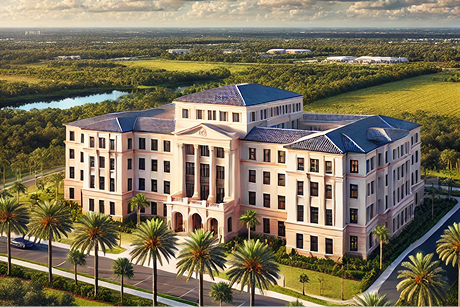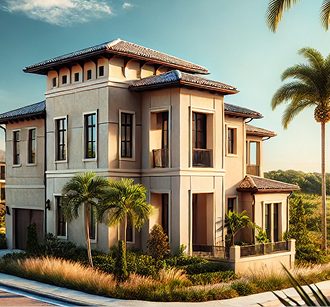
In Florida’s dynamic building environment, the materials used for exterior walls need to meet high standards, both visually and functionally.
Stucco has long been the material of choice, but Exterior Insulation and Finish Systems (EIFS) are becoming a popular modern solution. Below, we explore how EIFS compares to traditional stucco and why it’s gaining traction in Florida’s demanding climate.
What Is EIFS?
EIFS, short for Exterior Insulation and Finish Systems, is a layered wall cladding system that integrates insulation and finishing materials. Originally developed in Europe after WWII, EIFS found a foothold in the U.S. market during the 1960s, largely due to its energy-saving capabilities and wide design potential.
A typical EIFS includes:
Insulation Board: Commonly made from expanded polystyrene (EPS), offering strong thermal protection.
Base Coat: A layer applied over the insulation, reinforced with fiberglass mesh for added strength.
Finish Coat: A decorative and weather-resistant outer layer, available in various textures and colors. Unlike stucco, which is cement-based and applied directly to a substrate, EIFS incorporates insulation within the wall system itself—making it more than just a surface treatment.
EIFS vs. Traditional Stucco: How They Compare
Material Composition
• EIFS: Lightweight and flexible, includes insulation as part of the system.
• Stucco: Heavier and more rigid, with no integrated insulation.
Thermal Efficiency
• EIFS: Delivers better energy performance, helping regulate indoor temperature.
• Stucco: Offers limited thermal resistance unless additional insulation is installed.
Moisture Handling
• EIFS: Earlier systems faced moisture problems, but current designs now include drainage layers to handle water effectively.
• Stucco: Allows moisture to evaporate naturally but can absorb water if cracks develop.
Durability Over Time
• EIFS: Resists cracking due to its flexibility.
• Stucco: Prone to cracking from building movement or settling.
Why EIFS Makes Sense for Florida Homes
Given Florida’s intense sun, humidity, and frequent storms, materials must stand up to the elements without compromising comfort or curb appeal.
• Better Energy Control: The insulating properties of EIFS help keep interiors cool and energy bills down.
• Moisture Management: Integrated drainage reduces the risk of trapped moisture—ideal for Florida’s rainy seasons.
• Storm Resilience: EIFS systems are lighter than traditional materials, reducing the load on structures and offering better impact absorption.
• Flexible Aesthetics: EIFS can be customized to resemble brick, stone, or other materials, giving homeowners more design freedom. Clearing Up Common Myths About EIFS
• “EIFS traps water.” Early designs lacked drainage, but updated systems are engineered to manage moisture effectively.
• “Stucco is stronger.” When installed correctly, EIFS often performs better in terms of flexibility and crack resistance.
• “It’s a fire hazard.” Modern EIFS products meet national and Florida-specific fire safety standards.
EIFS Installation & Maintenance Essentials
Installation Overview
1. Surface Prep: Substrates must be clean, dry, and structurally sound.
2. Attach Insulation: EPS boards are securely affixed to the wall surface.
3. Apply Base Coat: Fiberglass mesh is embedded into the base coat for reinforcement.
4. Finish It Off: A textured finish is added to complete the system.
Maintenance Guidelines
• Conduct yearly inspections for damage or wear.
• Clean the surface with mild, non-abrasive cleaners.
• Repair minor damage quickly to prevent water penetration. Florida Regulations for EIFS Installations EIFS installations in Florida are subject to strict building codes:
• ASTM E2568 Compliance: Required for system approval.
• Approved Substrates: EIFS must be installed over masonry or concrete surfaces only.
• Drainage Systems: Mandatory to avoid moisture retention.
• Fire Ratings: Systems must meet all applicable fire resistance criteria under Florida Building Code Chapter 14. Contractors working with EIFS should be familiar with these regulations to ensure proper compliance and long-term performance.
Conclusion
EIFS is more than just a modern cladding. It’s a forward-thinking approach to building in Florida. With its energy efficiency, moisture resistance, and design flexibility, it stands as a strong contender against traditional stucco. That said, success lies in the details: proper installation, code compliance, and regular maintenance. For builders and homeowners alike, working with experienced EIFS contractors ensures the investment pays off with durable, high-performing exteriors that meet Florida’s challenges head-on.

